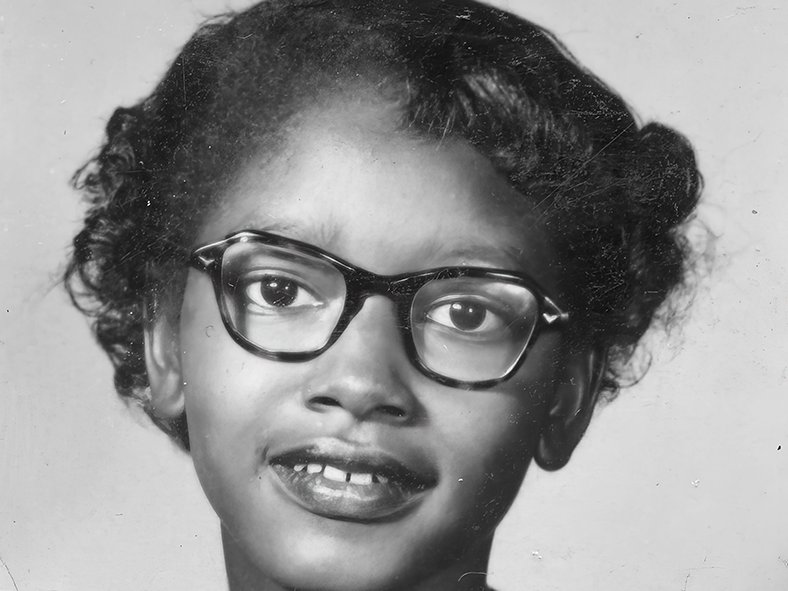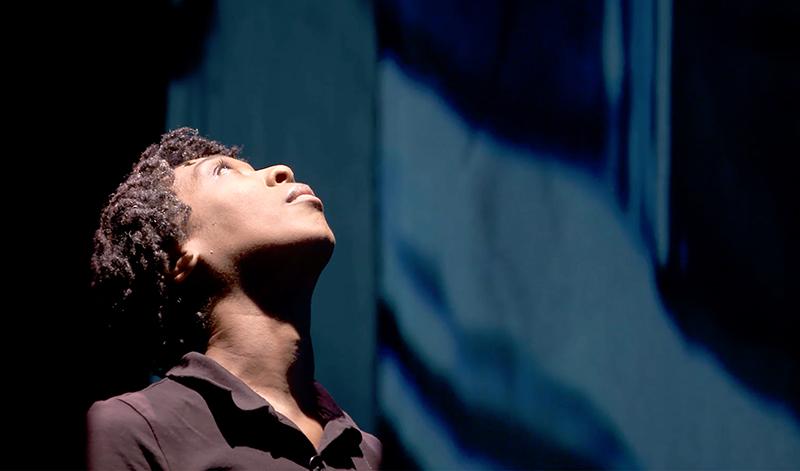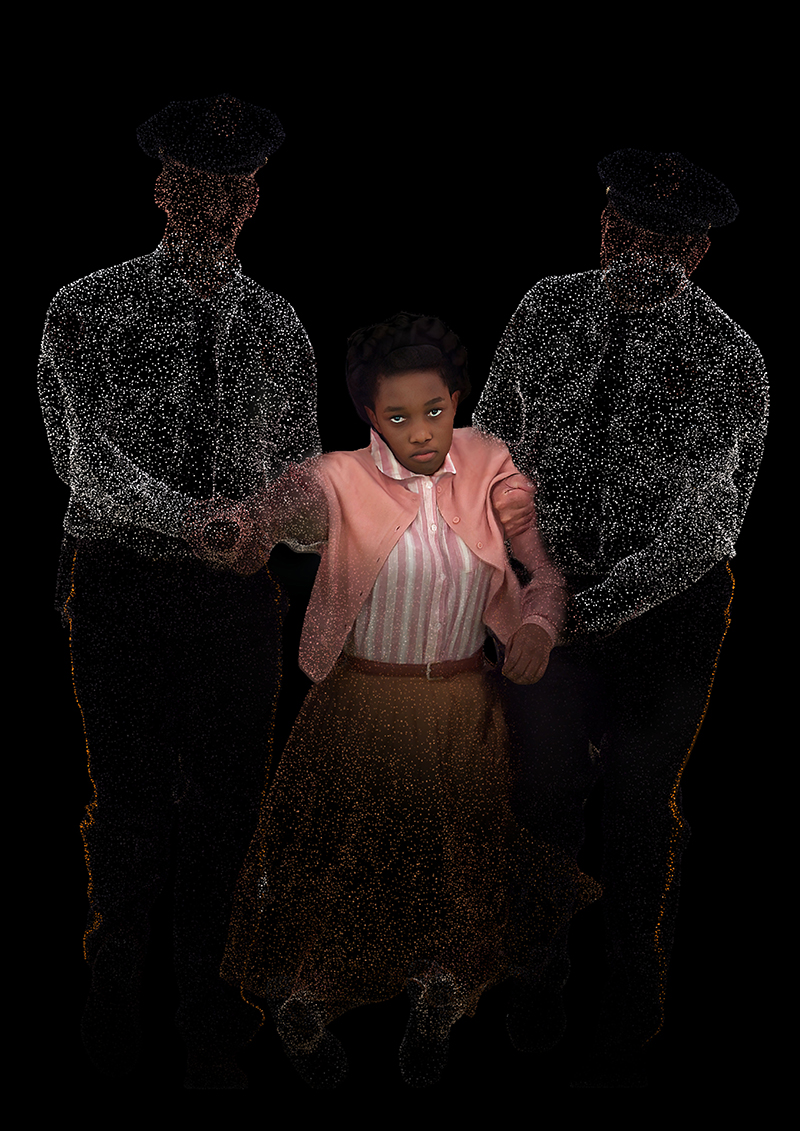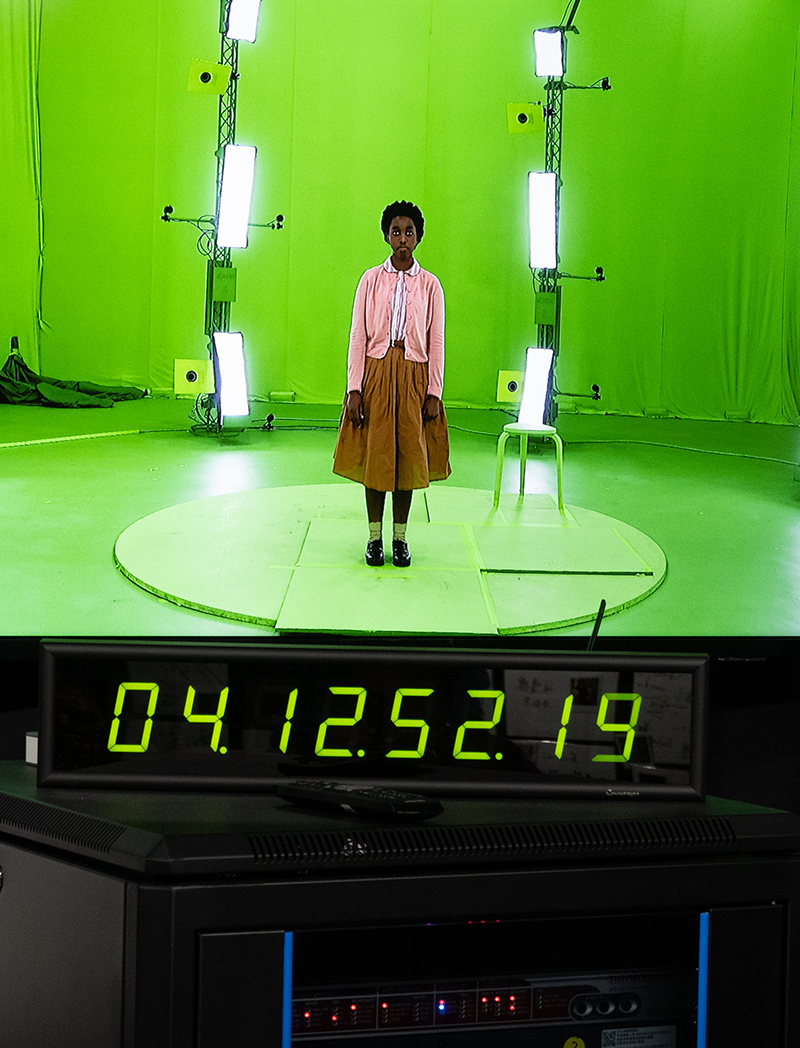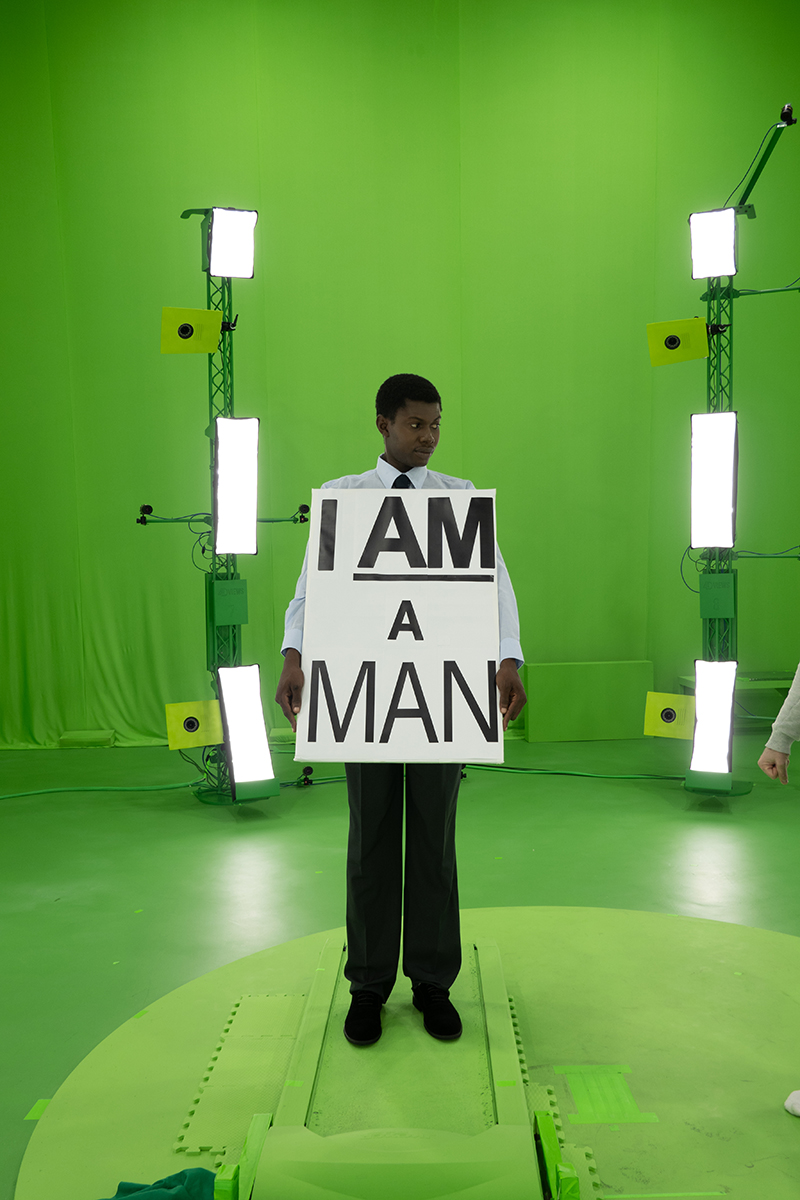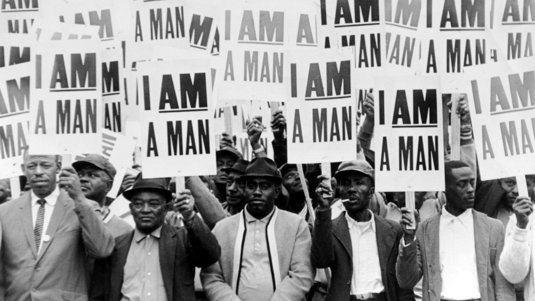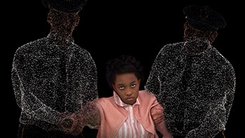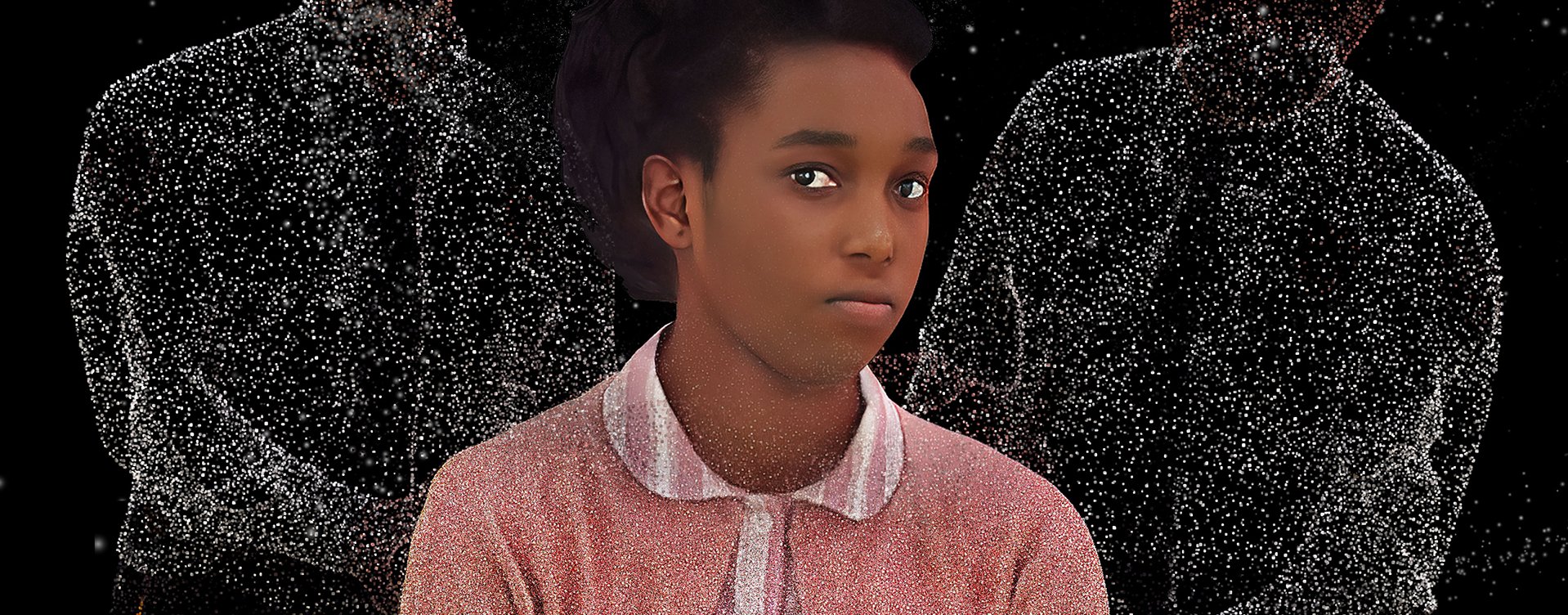
« Noire » : a journey into segregationist America, with the help of augmented reality
Before Rose Parks, there was Claudette Colvin. However, history has not retained the name of the 15-year-old girl who nevertheless rebelled heroically against the iniquitous system of segregation by refusing to give up her seat on a bus to a white passenger. It happened in Montgomery, Alabama, on 2 March 1955 – nine months before Rosa Parks's action. To understand the "deletion" of Claudette Colvin, after a long investigation to unravel the enigma, in 2015 the writer and dramatist Tania de Montaigne published Noire. La vie méconnue de Claudette Colvin (Grasset, winner of the Simone-Veil Prize). Adapted for theatre by Stéphane Foenkinos in 2019, this biographical essay served as a matrix for the augmented reality experience presented in a world premiere in the Centre Pompidou — an extension that transmits Claudette Colvin's story and continues the rehabilitation work begun by the author. As the storyteller, Tania de Montaigne lends her voice and face to this gripping narrative: "Take a deep breath, exhale, you are now in Montgomery, Alabama in the 1950s…"
With the help of a light augmented reality helmet (HoloLens 2) and a bone conduction headset, holograms of the young Claudette and characters in the narrative come to life (in reality, actors filmed in volumetric capture and then digitized). The space is minimalist, the stage is practically bare, and the presence of balancing suspended objects suggests the fragility of a story being reconstructed. On a screen, montages made by Pierre-Alain Giraud combine archives, videos, promotional clips and original images. Documents that Stéphane Foenkinos collected on-site in Montgomery form bridges between the real world and the virtual world.
With the help of a light augmented reality helmet and a bone conduction headset, holograms of the young Claudette and characters in the narrative come to life.
Music and spatialised sound also play an essential role in the immersive installation. Nina Simone, Mahalia Jackson and Ray Charles are summoned up, their melodies having accompanied the civil rights movement. Blending sound textures, archives, voices and original music, the soundtrack was designed by Valgeir Sigurðsson (who regularly works with Björk, among others) and sound designer Nicolas Becker (Oscar for best sound in 2021). For Tania de Montaigne, "this new form is the formal conclusion of this story, the synthesis of my written narrative, materialising the return of the suppressed history that guided me, of these ghostly memories that still haunt our present. [It's] an unexpected tool for making known the story of an ordinary and extraordinary woman, her iron will, her fragility, her candour in the midst of an absurd period and system." Interview.
How did you imagine this immersive installation and what does augmented reality add to it?
Tania de Montaigne — This installation is really the continuation of my earlier work, in the book and in the show. Here, technology is an instrument, it's a means and not an end. The original story was thought out as an experience in the course of which I proposed "to augment" the reader's perception of reality…
What themes did you really want to deal with?
Tania de Montaigne — My subject was that people should realise the degree to which what Claudette Colvin did was heroic. I wanted people to reconsider the concepts of the "hero" and justice. What is a heroic action? Today we tend to think that a hero or a heroine is someone who has three million followers or who does spectacular things… What became clear to me when I started work on the book was that the real Claudette Colvin was the opposite of the description that was given of her. She was a discreet, self-effacing adolescent, a very far cry from the highly colourful character that was described. At the core of my essay was the idea of showing how a myth is constructed, how people are made into archetypes. On the one hand, Claudette "the diabolical", and on the other, in counterpoint, Rosa "the virginal". It was also to recount how the women's brain was erased – it was their body that would determine whether they were in the struggle or not. For Claudette, it was her belly, because she was said to be pregnant at the time, which explains why she wasn't chosen by the movement; for Rosa, it was her feet… The official recounts that the seamstress's painful feet were the reason behind her refusal to stand up in the bus, whereas in fact she had been a committed militant in the struggle for civil rights for twenty years!
Claudette Colvin will live on through the stories that each person makes about her, and the more people who know her name, the better the chance that her struggle will be an example.
Tania de Montaigne
In the book, as in the show, my job was to see how we can "cut through colour" to see what a human being is who is denied their rights. "Alterity" is often a sort of portmanteau word that is used to signify how much the specificity of someone distances us from that person, that they are defined solely by what we believe them to be. In reality, this saves us the expense of the Other… To fight against racism is precisely to try to shift this. Racism created the idea that a person's colour determines their psychology. So it was enough to look at someone in order to know who they were. Nature conflated with nurture. This is what's called essentialisation.
What would you like the public to retain from this experience?
Tania de Montaigne — I just hope that after the show they will have "augmented" their life with that of Claudette. They will know who she is and will be able to pass on her story. Claudette Colvin will live on through the stories that each person makes about her, and the more people who know her name, the better the chance that her struggle will be an example. I believe in storytelling. We are people of stories, everything we know about ourselves comes to us through stories. The life of a human being is the sum of these stories that build up between birth and death. That Claudette Colvin's story can be part of the inner book of all those who come to see the installation is fantastic. ◼
* Scénography by Laurence Fontaine and Céline Coffin
Related articles
In the calendar
Image from « Noire. La vie méconnue de Claudette Colvin ».
© Novaya
